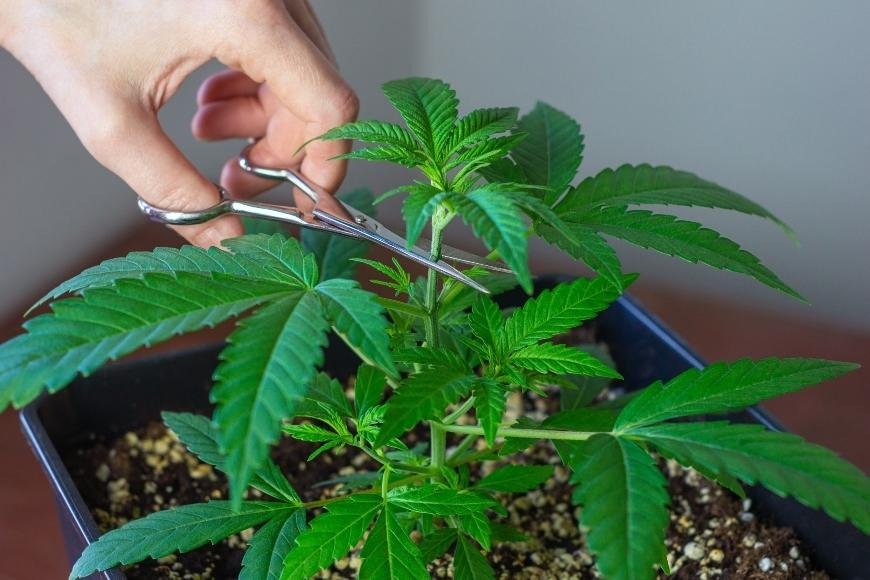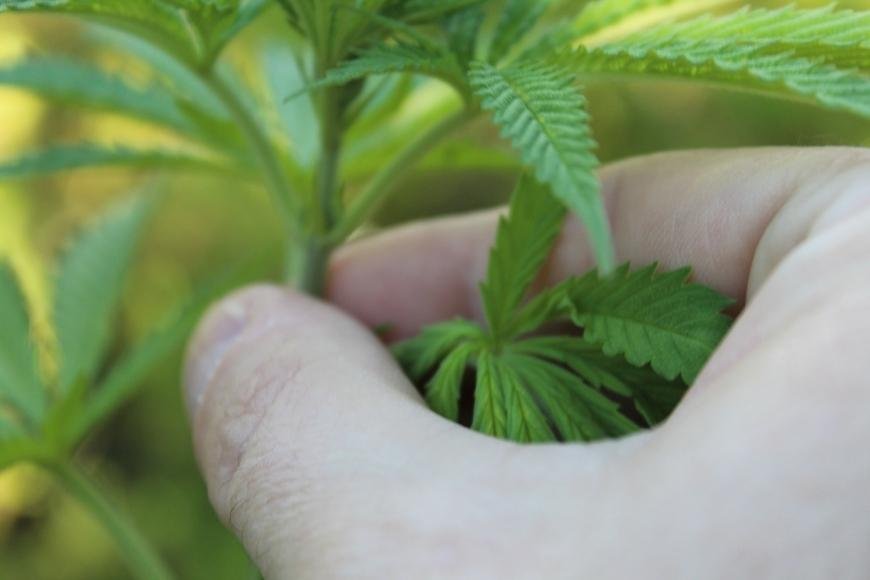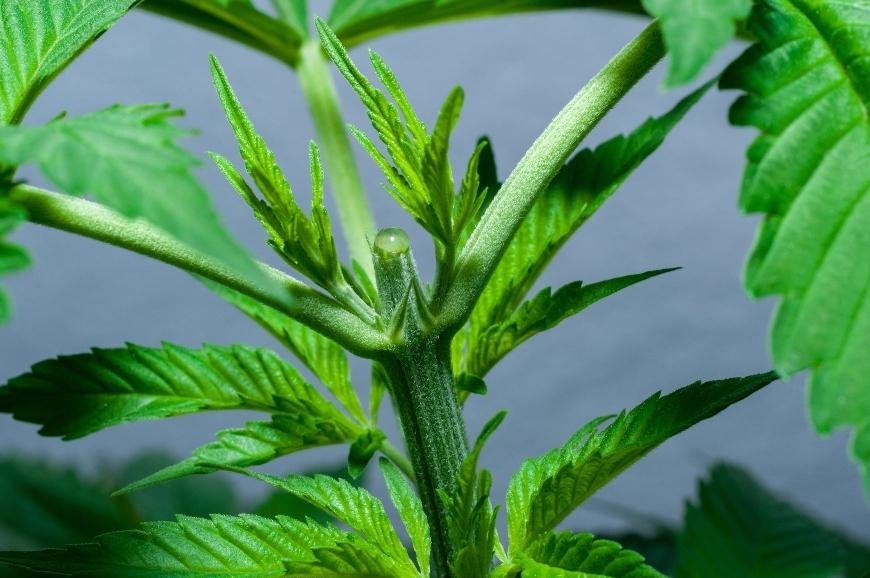Mainlining Cannabis Plants: How To
Mainlining is a pruning and training technique for cannabis plants that can improve yields and create a more even canopy. Learn how to do it here.

When it comes to optimizing the growth and yield of your cannabis plants, mainlining is an essential technique that every cultivator should master. In this comprehensive guide on "Mainlining Cannabis Plants: How To," we will delve into the intricacies of this method and provide you with valuable insights to help you achieve a successful harvest.
Mainlining involves manipulating the plant's structure through topping, pruning, and low-stress training techniques in order to create a more balanced distribution of energy and resources throughout its branches. This front-loaded process not only enhances overall vegetative growth but also increases bud sites for higher yields during flowering.
In this guide, we provide detailed instructions on how to prepare your cannabis plants for mainlining and offer expert advice to help ensure successful results. By implementing these strategies outlined in our "Mainlining Cannabis Plants: How To" guide, both novice growers and seasoned experts alike can maximize their crop's potential while minimizing risks such as bud rot or uneven growth patterns.
Table of Contents:
- Understanding Mainlining Cannabis Plants
- Benefits of mainlining cannabis plants
- Preparing Your Plant for Mainlining
- Training Primary Branches
- Developing Manifolds & Mainlines
- Preparing for the Flowering Stage
- Final Defoliation & Harvesting Tips
- Frequently Asked Questions Mainlining Cannabis Plants: How to
- Conclusion
Understanding Mainlining Cannabis Plants
Mainlining cannabis plants is a hybrid technique that combines low-stress training (LST), topping, and the use of a ScrOG net to create an evenly distributed, symmetrical plant structure. This method increases yields by encouraging the development of several large, uniform colas and optimizing light exposure for each branch. It works well with hydroponic setups and does not require a net.
Benefits of mainlining cannabis plants
- Better yield: By creating multiple main branches or "mainlines," you increase the number of bud sites on your cannabis plant, which can lead to higher yields.
- Even canopy: Mainlining helps create an even canopy that allows all parts of the plant to receive equal amounts of light. This prevents certain areas from being shaded out and promotes more consistent growth throughout the entire plant.
- Easier maintenance: With its organized structure, mainlined plants are easier to maintain than traditional growing methods since there's less chance for tangled branches or uneven growth patterns.
- Fewer problems with pests & diseases: A well-maintained mainline system reduces hiding spots for pests like spider mites while also improving airflow around your plants - reducing risks associated with mold or bud rot issues during flowering phase.
In order to achieve success when mainlining cannabis plants, it's essential to incorporate low-stress training techniques into your grow routine. LST involves gently bending stems without breaking them so they grow horizontally instead vertically; this maximizes available light exposure and encourages more even growth patterns throughout the plant. Combining LST with topping (removing the main stem's growing tip) and strategic pruning allows you to create a cannabis plant that grows vigorously while maintaining an organized structure for optimal light absorption.
Mainlining cannabis plants is a great way to maximize the yield of your crop, but it requires careful preparation and attention. By following these steps, you can ensure that your plant is ready for mainlining before making any initial cuts or topping process.
Preparing Your Plant for Mainlining
Mainlining cannabis plants is an essential technique to maximize yields and ensure optimal light exposure. To start mainlining, it's crucial to wait until your plant has developed enough nodes before making any cuts or topping. In this section, we'll discuss when to begin the process and how to make initial cuts effectively.
When to Start Mainlining
The ideal time to start mainlining your cannabis plant is when it has grown 5-8 nodes. This stage typically occurs during the vegetative phase of growth, allowing you ample time for training and shaping the plant before entering the flowering phase. Patience is key here; starting too early may stunt growth or cause unnecessary stress on your young plants.
Initial Cuts and Topping Process
- Selecting Nodes: Once your cannabis plant has reached 5-8 nodes, identify the third node from its base as a reference point for cutting.
- Cutting Down: Using sharp scissors or pruning shears, cut down the entire plant right above that third node (topping). Be careful not to damage any remaining leaves in this area.
- Topping Both Sides: After cutting down initially, top both sides of each branch at their respective third nodes so that you have eight shoots in total growing outwards from one central stem (main trunk).
- Growth Tips Management: Allow these new branches (growth tips) some time - usually around two weeks -to grow unimpeded until they reach their fourth node again; then top them once more using similar techniques mentioned earlier.
By following these steps, you'll create a solid foundation for your cannabis plant to grow vigorously and produce an even canopy with multiple main colas. This front-loaded process sets the stage for successful cannabis training and ensures that your plant is well-prepared for the next stages of mainlining.

Training Primary Branches
Mainlining cannabis plants involves training the primary branches to grow horizontally, which optimizes light exposure and encourages even growth. After topping your plant for the second time, you'll need to gently bend and secure the two primary branches using low-stress training techniques.
Bending Techniques for Primary Branches
When bending the primary branches of your cannabis plant, it's essential to use a gentle approach that doesn't cause damage or stress. To do this effectively:
- Select stems that are still soft and flexible; avoid attempting to bend woody or rigid stems as they may snap.
- Gently bend each branch downwards at a gradual angle rather than forcing them into position quickly.
- Use both hands when bending: one hand should hold onto the main stem while the other guides the branch into its new horizontal position.
Securing Trained Branches Effectively
To maintain their newly trained positions, you must securely fasten your cannabis plant's primary branches without causing any harm. Here are some tips on how to do so:
- Choose appropriate ties: Use soft ties or rubber-covered bud trainers that won't cut into or damage your plant's delicate tissue as it grows vigorously. Avoid using zip-ties, wire hangers, or anything else with sharp edges that could potentially harm your plants.
- Tie loosely: When securing trained branches in place with ties around their base near where they connect with main stem , ensure there is enough slack for natural movement and growth. This will prevent undue stress on the plant and allow it to grow without restriction.
- Monitor and adjust: As your cannabis plants continue through their vegetative stage, check them regularly for any signs of strain or damage caused by the ties. Adjust or replace ties as needed to ensure proper support throughout this critical phase of development.
Training primary branches requires a combination of bending techniques and effective securing, so that the plant can be trained to grow in its desired shape. With this foundation set up, it is time to develop manifolds and mainlines for optimal growth.
Developing Manifolds & Mainlines
Mainlining cannabis plants involves creating a well-structured and symmetrical plant that optimizes light exposure and nutrient distribution. This is achieved by developing manifolds and mainlines from the initial cuts made during the vegetative phase. In this section, we will discuss how to create these essential components for successful cannabis mainlining.
Creating Manifolds from Initial Cuts
To develop manifolds, start with your cannabis seedlings or clones at their lower nodes. Using soft gardening wire tent pegs, gently bend each of the selected branches downward to form an even canopy while maintaining a central hub or manifold connection point. The goal is to have six to eight evenly spaced branches growing horizontally away from the main stem.
Pruning Side Branches for Optimal Growth
In addition to forming manifolds, it's crucial to prune off any weak side branches as your plant grows vigorously. Focus on maintaining only those bud sites connected through the manifold hubs as they continue growing vertically within their limited space constraints - especially if utilizing smaller containers like three-gallon nursery pots under single 400-watt HPS lights.
- TIP: Prune early in the vegetative stage when growth tips are still tender and easy to remove without causing damage.
- TIP: Avoid pruning too close to flowering phase since doing so can stress out your plants leading them into hermaphroditism or lower yields.
By developing manifolds and mainlines, you are setting the foundation for a well-structured cannabis plant that will produce multiple main colas with optimal light exposure and nutrient distribution. This front-loaded process ensures your plants have the best possible start to their vegetative growth, leading to higher yields when it's time to harvest.
Developing Manifolds & Mainlines requires careful attention to detail and an understanding of the plant's growth patterns. With this knowledge, you can then begin preparing for the flowering stage by timing your trimming fan leaves and maintaining a desirable shape throughout the process.
Preparing for the Flowering Stage
Mainlining cannabis plants requires careful preparation as you transition from the vegetative stage to the flowering phase. Proper maintenance of your plant's shape and structure is essential to ensure that all main branches receive optimal light exposure, leading to increased yields and healthier buds.
Timing of Trimming Fan Leaves
To prepare your cannabis plant for flowering, it's crucial to trim fan leaves right before the onset of this stage. This helps maintain its desired shape throughout the process while also promoting better airflow around bud sites. Removing large fan leaves allows more light penetration into lower parts of the plant, which can lead to an increase in overall yield. Additionally, trimming excess foliage reduces humidity levels within your grow space, minimizing risks associated with bud rot.
Maintaining Plant Shape During Flowering
- Check Plants Regularly: Inspect your cannabis plants at least twice a week during their flowering phase to ensure they maintain their desired form. Adjust any ties or supports if necessary so that all main colas have equal access to light.
- Avoid Overcrowding: Ensure there is enough space between each branch by regularly pruning unnecessary growth tips and side shoots not connected directly through manifolds or hubs on each mainline stem.
- Symmetry Matters: Aim for symmetry among all branches as much as possible; this will optimize light distribution across every part of your plant and promote even development among colas.
- No More Topping: Once you've reached this point in your growing cycle - usually about two weeks before switching to the flowering phase - it's time to stop topping your plants. This allows them to focus their energy on producing flowers rather than continuing vegetative growth.
By following these guidelines, you'll be well on your way towards a successful mainlining process that results in multiple large colas and a bushier overall appearance for your cannabis plant. Remember that consistency is key when mainlining cannabis plants, so keep an eye on their progress and make adjustments as needed throughout each stage of growth.

Final Defoliation & Harvesting Tips
In this section, we will discuss the importance of aggressive defoliation and maximizing yield with proper harvesting techniques. As your cannabis plants approach their final weeks before harvest, it's essential to perform a thorough defoliation process to ensure optimal light exposure and nutrient distribution throughout the plant.
Importance of Aggressive Defoliation
Aggressive defoliation is a technique used by growers to remove excess fan leaves from their cannabis plants in order to increase light penetration and airflow. This method is particularly useful for growing stealth plants that require a low profile and can be kept in small spaces while still producing high yields. By removing unnecessary foliage, you allow more energy to be directed towards bud production instead of leaf growth.
- Better Light Penetration: Removing large fan leaves allows more light to reach lower bud sites on your mainlining cannabis plants, promoting even growth across all branches.
- Airflow Improvement: Proper air circulation is crucial for preventing mold or bud rot. Thinning out dense foliage helps improve airflow around your plant's canopy.
- Nutrient Distribution: With fewer leaves competing for nutrients, the remaining buds receive an increased share of resources needed for healthy development during the flowering phase.
Maximizing Yield with Proper Harvesting Techniques
To make sure you get the most out of your mainlined cannabis crop at harvest time, follow these tips:
- Timing is Key: Harvest your cannabis plants when the trichomes are at their peak potency. Use a magnifying glass or jeweler's loupe to inspect the trichomes and look for a mix of cloudy and amber-colored ones.
- Dry & Cure Properly: After harvesting, hang your buds upside down in a dark room with good airflow to dry them out. Once they're dry, transfer them into jars for curing - this process will help improve flavor, aroma, and overall quality of your cannabis.
- Avoid Contamination: When handling your harvested buds, make sure you wear gloves to prevent contamination from oils on your skin. Additionally, use clean tools like scissors or trimmers during the trimming process.
Incorporating these final defoliation and harvesting tips into your mainlining cannabis plant routine can significantly impact the yield and quality of your crop. By ensuring optimal light exposure and nutrient distribution throughout each stage of growth, you'll be well on your way to enjoying bountiful harvests from healthy mainlined plants.
Frequently Asked Questions Mainlining Cannabis Plants: How to
How do I start mainlining?
To start mainlining, begin by topping your cannabis plant after the 5th or 6th node. Remove lower branches and leaves to encourage growth at the top. Train primary branches horizontally using low-stress training (LST) techniques like bending and securing them with soft ties. This creates a manifold structure that promotes even nutrient distribution for optimal growth.
How long does it take to mainline a cannabis plant?
Mainlining a cannabis plant typically takes around 4-6 weeks during the vegetative stage before transitioning into flowering. The time required depends on factors such as strain, growing conditions, and individual preferences in terms of desired yield and overall size of the plant.
What is mainline growing technique?
The mainline growing technique, also known as manifolding, is an advanced method of training cannabis plants to create an evenly distributed canopy for maximum light exposure and nutrient uptake. It involves topping, pruning, defoliation, and low-stress training (LST) to develop multiple primary colas resulting in higher yields.
Conclusion
To ensure successful mainlining, this article outlines the necessary steps to take. Remember to top and prune your plant correctly, use low-stress training techniques, provide proper nutrients and lighting for optimal growth, and monitor the progress of your mainlined cannabis plants regularly. With patience and practice you will be able to master the art of mainlining cannabis plants.


























































































































